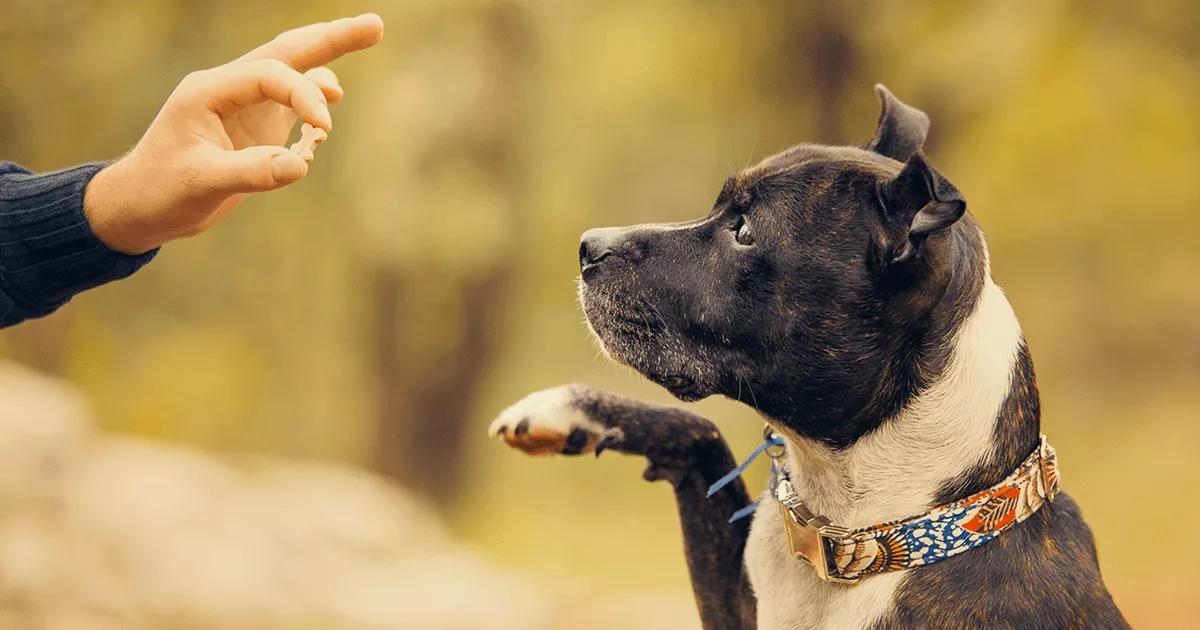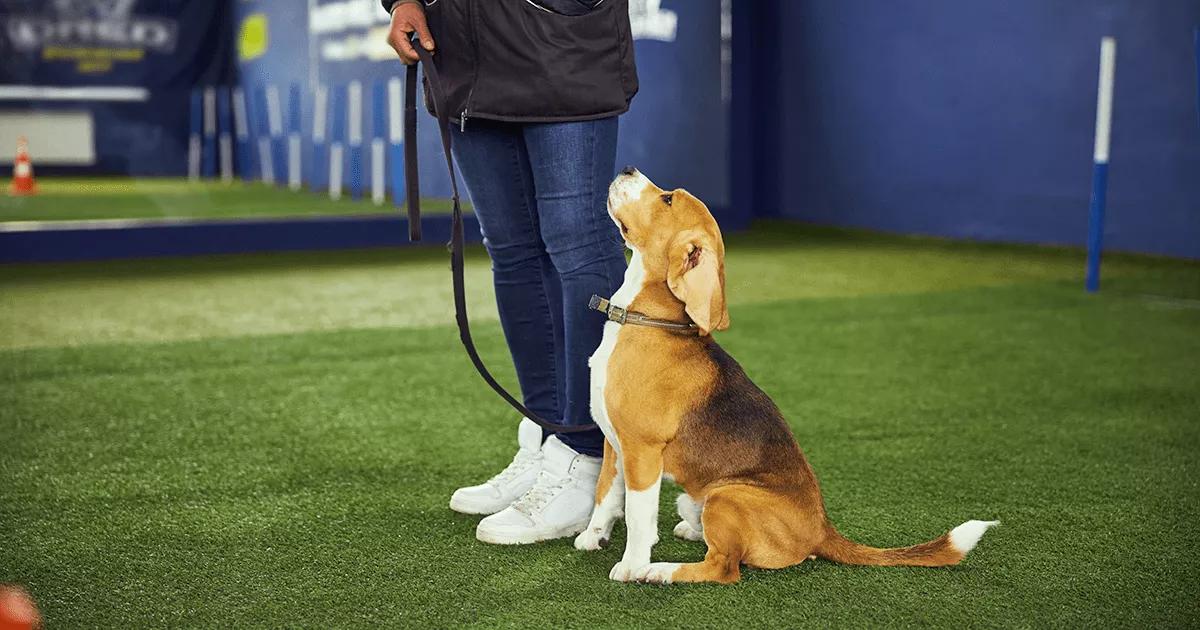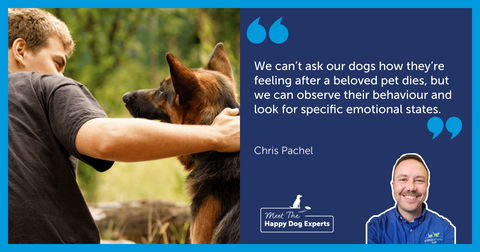
Cooperative Care For Dogs: A Happy Dog Expert Explains
If you’re new to the idea of “cooperative care” training for dogs, you’re in for a treat! This is a highly beneficial approach to caring for our canine companions that can help them to remain comfortable and relaxed in potentially stressful situations. In this article, we’ll discuss how cooperative care for dogs works, its benefits, and how you can incorporate it into your own training at home.
What Is Cooperative Care Training?
Cooperative care is a means of interacting with your dog in such a way that they become a cooperative partner in the process. As well as using positive reinforcement to create an enjoyable grooming, veterinary, or husbandry experience, you are also giving them a voice in the process by teaching them how to opt-in and to opt-out.
Cooperative care for dogs, and for pets in general, is modeled after the training used in places such as zoos and aquariums. In these settings, animals are taught to participate in their medical check-ups. Think of elephants taught to show the bottom of their feet so trainers can take a look, or gorillas taught to show their bellies so veterinarians can do pregnancy ultrasounds.

The Benefits Of Cooperative Care For Dogs
The magic of cooperative care training is that we are giving animals a sense of agency and control. It’s not just about developing tolerance or requiring them to “put up with it”. We’re developing a dialogue that allows the animal learner to communicate, “I’m not comfortable going further. I am opting out of this procedure at this moment.” By respecting that communication and stopping before the animal becomes stressed or defensive, a trust relationship is created. Animals learn to willingly opt in for progressively more challenging experiences.
When Can Cooperative Care Training Help?
When it comes to dog care and training, this approach has a range of applications for home use. These could be anything from nail trimming to general grooming and bathing. There are also benefits for veterinary and grooming experiences too. It may take a bit of practice to work up to a fully cooperative haircut, vaccination, or blood collection, but it is doable for most dogs with patience and careful implementation of these strategies.

It's worth noting that, while cooperative care training can absolutely increase safety for pet owners and handlers, it may need to be approached with balance. In some situations, pre-visit pharmaceuticals or even full sedation may be needed. For instance, this could be necessary when a procedure exceeds the comfort levels an animal has experienced during the training process.
Cooperative care for dogs is also useful at home when you need to give your pet medication, daily injections, or to groom them. For example, after successfully training in cooperative care, a dog who was once anxious about getting their nails clipped may choose to sit quietly and provide you their paw willingly for a nail trim.
How To Start Using Cooperative Care
Teaching your dog how to participate in cooperative care training should be fun for both of you. Think of it as teaching your pet a new trick, rather than obedience training. It just so happens that this “trick” is an incredibly functional one!
Just remember that teaching cooperative care to your pet can be a slow process, especially if this is new to you as well. The best approach is to break the procedure down into very small steps. For example, teaching your dog to feel calm about nail trimming might start with sitting on the floor. Next, progress to sitting on the floor with a clipper nearby. Then, move on to sitting on the floor together while you hold the clipper. Depending on your dog’s comfort level, each of these steps may need to be repeated several times over a period of days or weeks while being paired with something your pet finds enjoyable, all before actually clipping the nail.

In addition to this desensitisation process, cooperative care for dogs also involves teaching your dog how to signal their “opt out”. This is a way for them to decline a certain movement or action without having to leave the session entirely or resorting to an aggressive display. This is commonly done using a “start button”. For instance, this could be a chin rest, by which your dog signals their readiness to proceed by intentionally placing their chin in contact with a solid surface. They also learn to disengage from the chin rest when approaching the limit of their comfort. You’ll become a master of reading their body language and understanding how they show their trust and their stress in this process!
A Patient Approach
Remember, channeling patience and staying within your pet’s comfort is essential. This ensures you don’t accidently coerce or pressure your animal into participating when they really want to opt out. It is tempting to push too fast, “just to get it done”, but this is likely to backfire and slow down the cooperative care training process even if it appears “successful” in the immediate moment.

The benefit of cooperative care for dogs extends beyond the specific situation you’re training for. It affects the overall stability and sense of safety in your entire relationship with your pet. After developing this cooperative dialogue, we often find that pets who previously struggled with fear and anxiety are more likely to check in with their owners if they’re feeling stressed. They’ll look to their human for reassurance and guidance based on the trust that has developed. The pet owner will also more reliably recognise when their pet is opting out of a situation, or if they need additional support.
To fully grasp the nuances of cooperative care training, I recommend working directly with a trainer or behaviour consultant who is skilled specifically in this area. You can also find video tutorials by searching the hashtags #cooperativecare and #cooperativehusbandry on Instagram for examples of how to teach this skill to your pets.
Cooperative care for dogs establishes a relationship of trust and safety that goes far beyond the training context, with far reaching benefits for the pet and the pet owner alike.
Are you looking for more dog care tips and training advice? Discover our range of Happy Dog Expert articles! Our dedicated experts cover everything from how a dog senses the world around them to advice on implementing positive reinforcement training. You can also stay informed with all our latest dog training guides, product info and Q&As by signing up to our newsletter.








































